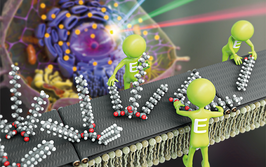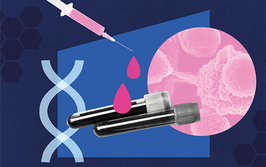
Dermal (ISF) Diagnostics
Exploring the diagnostic potential and utility of dermal interstitial fluid
George Francis Lee | | 2 min read | News
Could dermal interstitial fluid (ISF) – the material that fills the space around skin cells – be a useful diagnostic medium? The average body has three times as much dermal ISF as blood, but much of the fluid’s diagnostic power is lost due to analytic disruptions caused by its extraction (1). But are we missing out on a potentially powerful diagnostic tool? And could it one day match – or even surpass – the blood standard? A new perspective examining just what differentiates the diagnostic power of blood has sought to settle those exact questions (2).
“There have been some breakthroughs… like wearable continuous glucose meters which measure glucose in interstitial fluid under the skin,” says study author Jason Heikenfeld. “So if glucose works so well, what else can we do with interstitial fluid for chronic disease, wellness, athletes?”
Previous work has been done on ISF, but rapid technological advancements beg the question of what the future holds for its diagnostic value. “Investments are ramping up rapidly in trying to measure interstitial fluid for broad applications without fully understanding the fundamentals of the physiology and its diagnostic limits,” Heikenfeld says. “[The paper] brings together previous knowledge for the first time in a cohesive and complete framework and provides some revealing numbers for the first time that eliminate areas of interstitial fluid access that are unlikely to be fruitful, such as interstitial fluid extraction; the volumes and rates are just too tiny to work with current technology.”
Ultimately, the paper found that dermal ISF cannot currently match the diagnostic power of blood. However, the authors state that there could be benefits in using assays or sensors to continuously monitor small-molecule analytes in dermal ISF – especially when monitoring immune responses or the effects of therapies. In fact, the authors encourage further dermal ISF research in the hope that, with greater sensitivity, performance, and functionality, dermal ISF will take its seat at the molecular diagnostics table.
- National Library of Medicine, “Physiology, Water Balance” (2022). Available at: http://bit.ly/3kjevSW.
- M Friedel et al., “Opportunities and challenges in the diagnostic utility of dermal interstitial fluid,” Nat Biomed Eng, [Online ahead of print] (2023). PMID: 36658344.
Interested in how disease interacts with our world. Writing stories covering subjects like politics, society, and climate change.




















